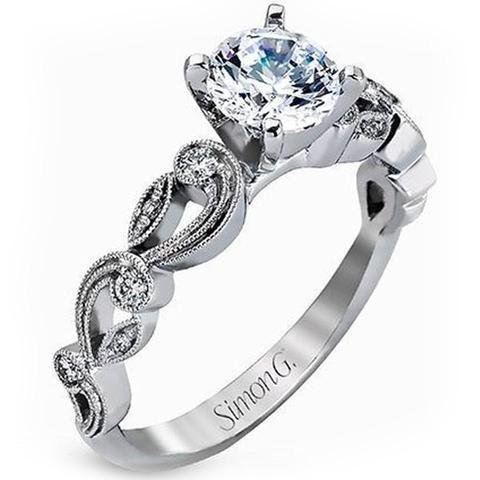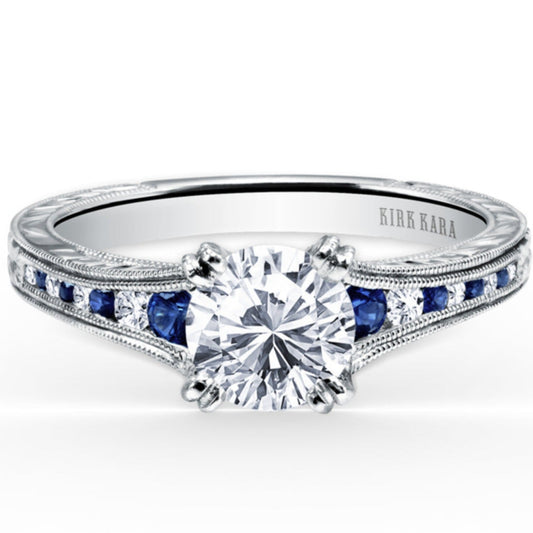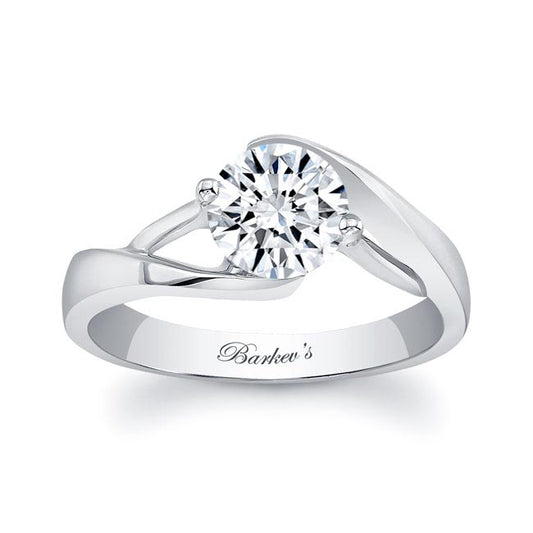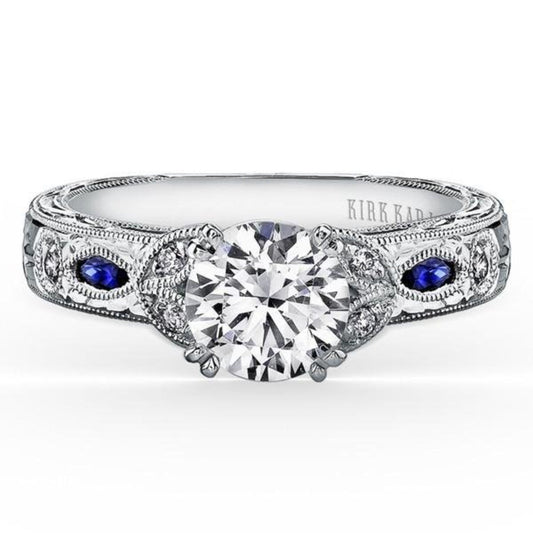Diamonds, we simply cannot get enough of them!
Their beauty, luxury, sparkle and value are beyond any other material on earth, making them so sought after.
But imagine getting your hands on a stunning diamond, only to find out it isn’t real?
Utterly devastating!
You want to avoid purchasing a fake diamond at all costs - but how can you tell whether a diamond is real?
Thankfully, there are several tests you can perform yourself to help distinguish whether your diamond is the real deal or not.
The best choice, however, is to get your diamond checked by a certified gemologist or jeweler to be 100% sure if your diamond is real.
In this blog, we’re going to introduce you to 5 easy tests that you can do yourself to check the authenticity of your diamond.
Let’s get to it!
In this article...
What Alternatives To Diamonds Are Typically Ised?
Okay, so before we jump into how you can test a real diamond, we want to talk about some alternative gemstones that are great secondary diamond options!
Here’s a list of popular gemstones you might like to consider:
Cubic Zirconia
This artificial gemstone is often used as a diamond simulant as its appearance is incredibly similar. It is inexpensive, has a high refractive index and can be made in various colors.
Moissanite
We’ll talk more about Moissanite later in the blog, and we have a dedicated blog on the differences between Moissanite and Lab Grown diamonds! Moissanite is a gemstone that is made of silicon carbide. It is very durable, has a high refractive index, and is less expensive than a real diamond.
White Sapphire
Sapphire is a natural gemstone that is also very durable and comes in various colors - white being the best option if you’re looking for a direct alternative to a diamond. Sapphires are less expensive than real diamonds but have excellent color and clarity.
It’s worth noting that these alternatives can be good choices for anyone looking for beautiful and durable gemstones but who are also wanting more affordable options than a diamond.
Of course, these gemstones are not natural diamonds and can be distinguished from real diamonds.
What Are The Fundamental Differences Between Moissanite And A diamond?
Both Moissanite and diamonds are very popular choices for jewelry, but they have some fundamental differences.
Composition
Both are naturally occurring; however, diamonds are made of carbon, and Moissanite is made of silicon carbide. Moissanite is often considered the best diamond alternative.
Hardness
Diamonds are the hardest naturally occurring mineral on earth, with a Mohs hardness scale rating of 10. However, Moissanite isn’t too far off, with a 9.25 on the Mohs scale.
Refractive Index
Diamonds have a higher refractive index than Moissanite, which means that diamonds will have more sparkle and fire.
Color
Natural diamonds come in various colors, but most are colorless. Because of recent advances in technology, Moissainte has been perfected to be whiter today.
Featured Affordable Moissanite Engagement Rings
Simon G. Vintage Style Scrollwork Filigree Diamond Engagement Ring
Artcarved "Peyton" Diamond Engagement Ring Featuring Scrollwork Design
Kirk Kara "Stella" Blue Sapphire Channel Set Diamond Engagement Ring
Barkev's Swirl Compass Set Princess Diamond Engagement Ring
Barkev's Swirl Solitaire Diamond Engagement Ring
Kirk Kara "Dahlia" Marquise Shaped Blue Sapphire Diamond Engagement Ring
Simon G. Vintage Style Bezel Set Side Diamond Engagement Ring
Barkev's Double Row Shared Prong Set Diamond Engagement Ring
Therefore, the majority of higher-quality Moissanite will be white and bright, while less expensive Moissanite can have a yellow or gray tint.
Cost
Overall, diamonds are generally more expensive than Moissanite.
Diamonds are undoubtedly the most popular stone on the market and hold their value above any other. However, Moissanite can be an excellent alternative to a diamond because of its similar durability, brilliance, and lower cost.
How To Test If Your Diamond is Real
Getting to the point of this blog - how can you test if your diamond is real?
Here are five simple tests you can do at home to see if your diamond is real.
Scratch Test
The scratch test is a method used to check the hardness of a diamond. Diamonds are the hardest naturally occurring mineral, with a Mohs hardness of 10. A diamond will scratch glass with a hardness of around 5-6 on the Mohs scale.
Fire/Heat Test
Due to the pressure required to create diamonds, they are extremely strong and durable. The fire or heat test is a test you can do to check this strength by subjecting the diamond to heat.
This one requires a lot of caution. You will need heat/fireproof gloves, some pliers, a water bowl and a lighter or live flame.
Use the pliers to hold the diamond in place and subject it to the flame's heat for around 40 seconds.
Following this, drop the diamond into the water to see its reaction.
Nothing should happen to a real diamond, but it will likely shatter if it’s a fake diamond. Non-diamonds struggle under the pressure of the expansion and contraction of heat, which will cause them to break.
Diamond Scale
A certified jeweler or gemologist can best assist with this one. Diamonds are valued and authenticated using a combination of factors such as the 4 Cs (carat weight, cut, color, and clarity) and additional characteristics like fluorescence and inclusions.

A professional gemologist will use various techniques, such as visual inspection, microscopy, and testing with specialized equipment, to determine and grade a diamond’s authenticity.
However, finding a flawless diamond is incredibly rare, and they are costly.
This means most real diamonds will have flaws, often called inclusions. You can view these with a magnifying glass; if you can’t spot any, it might be a sign that your diamond is fake!
Check the Setting & Mount
A diamond isn’t likely to have a cheap setting, so you should look for real gold, silver or platinum. Markings usually indicate that on the setting and mount - 10K, 14K, 18K, 24K for gold. PT, PLA, PT900 or PT 950 for platinum and 925 for silver.
Dot Test
The dot test is a method that is used to see if your diamond refracts light, which a real diamond should do.
Draw a dot on a white sheet of paper and place the diamond flat side down onto the dot.
Then look through the pointed tip of the diamond to see if you can still see the dot. If so, your diamond is fake; if you can’t, it’s likely real!
Of course, these tests may not be enough to determine whether your diamond is real accurately.
Therefore, to ensure your diamond is authentic, you should speak with a gemologist or jeweler to confirm.
If you’ve got a diamond you’d like expert help with, come and visit us at Ben Garelick, and we’ll be able to check over your diamond for you and confirm if it is real or fake!
Shine Like a Diamond
Nothing quite compares to the beauty and sparkle of having your very own real diamond.
If you find yourself possessing a diamond or buying one at a cheap rate that may seem too good to be true, it’s best to check if you’ve got the real deal!
Hopefully, these five simple at-home tests will help you do just that, and remember, to be 100% sure of your diamond’s authenticity, speak with a gemologist or jeweler.
Visit us at the Ben Garelick showroom to check your diamond and also browse our exquisite diamond and gemstone collection!
Visit us at our Buffalo, NY store today. Not nearby? Not to worry - chat with our diamond experts online 24/7, call us at (716) 631-1584, or text (716) 574-0966. Let's find the gemstone that’ll make you shine!

Peter Manka Jr. - Owner at Ben Garelick
Peter Manka Jr. is a passionate member of the family business who joined Ben Garelick in the early 2000s after working in product licensing for Sesame Workshop & The Jim Henson Company for many years. He obtained a degree in diamonds and jewelry from the prestigious Gemological Institute of America (GIA) in order to sharpen his jewelry skills. He takes great pride in providing exceptional customer service and helping clients find the perfect piece of jewelry.











